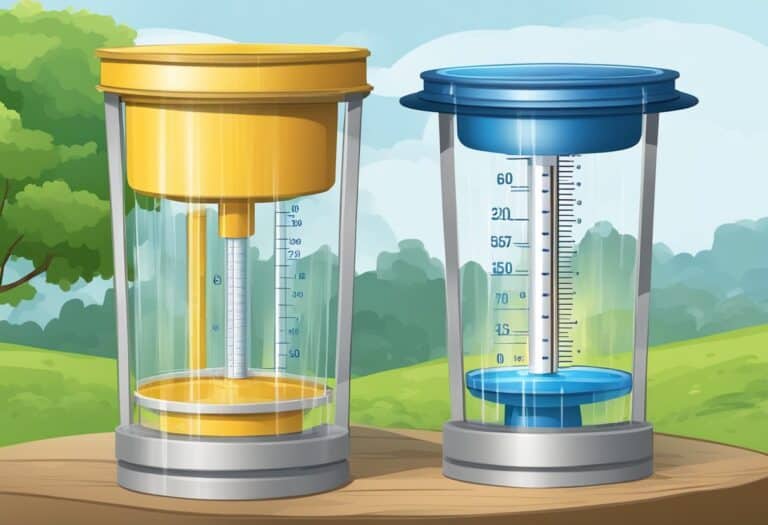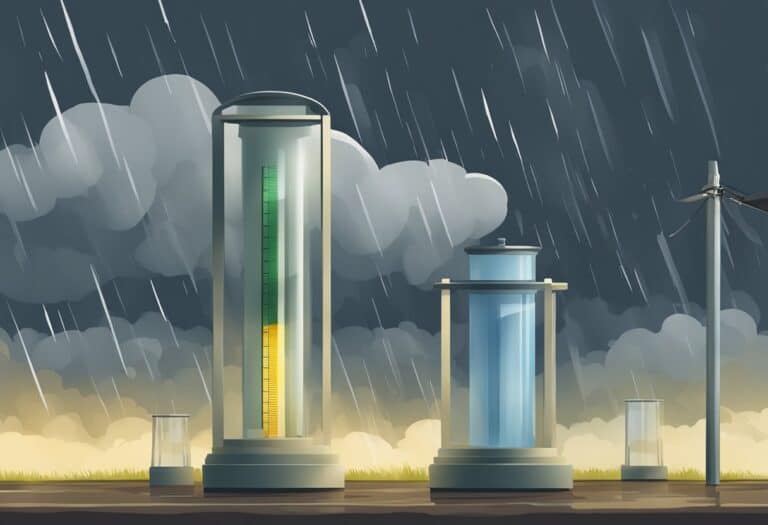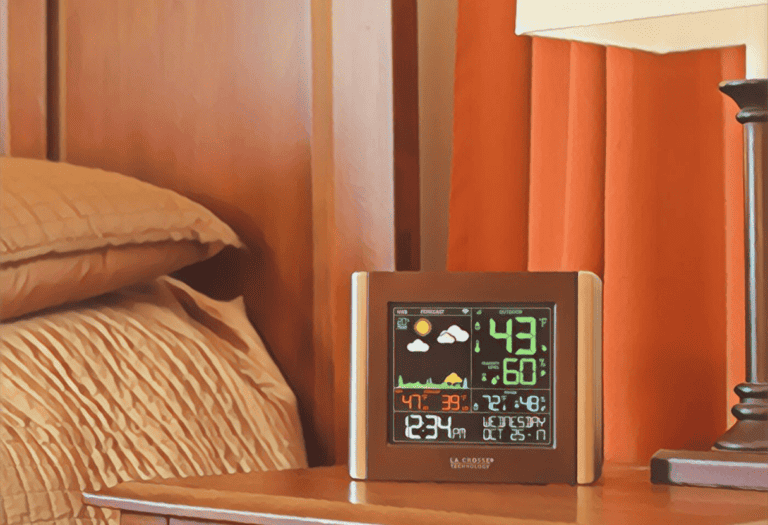When severe weather strikes, your level of preparation can significantly influence your safety and comfort during such events.
An emergency kit is an essential collection of items you need to survive until normal conditions return or help arrives. Crafting a severe weather emergency kit should be a meticulous process, as it must cater to basic sustenance, personal protection, and communication needs. It’s not just about having supplies; it’s about ensuring you have the right supplies.
Understanding what to include in your emergency kit is crucial. Essentials such as water, non-perishable food, and first-aid supplies are just the beginning. Additional considerations should focus on personal safety items like warm clothing and sturdy shoes, as well as tools to stay informed, like a hand-crank radio or a solar charger for your devices.
By carefully selecting items that keep you nourished, safe, and connected, you can create a robust kit that bolsters your resilience against the unpredictability of severe weather.
Weather woes got you worried? Pack food (water, non-perishables, opener), first aid, warmth (blankets, clothes), hygiene, and a charged phone with a map. Stay informed with NOAA radio, and grab a flashlight, whistle, duct tape, and cash. Don’t forget waterproofed copies of essential documents.
Essentials for Sustenance

When preparing for severe weather, your emergency kit must include food and water essentials that will sustain you and your dependents.
Water is critical, so plan on having at least one gallon per person, per day, for drinking and sanitation. For a family of four, a three-day supply would mean you should have at least 12 gallons stored.
Food items should be non-perishable and easy to prepare. Include a diverse selection to meet nutritional needs and cater to any dietary restrictions or allergies. Your kit should comprise:
- Canned food: Fruits, vegetables, and meats can be stored safely for extended periods. Remember a manual can opener because power outages could render electric can openers useless.
- Dry goods: Rice, pasta, and beans are staples that offer numerous meal options and have long shelf lives.
- Specialty items: If you have infants, infant formula and baby food will be vital. For pet owners, stocking up on pet food ensures the well-being of your animal companions.
Here’s a quick checklist to help organize your essentials:
| Item | Quantity |
|---|---|
| Water | 1 gallon per person per day |
| Canned fruits & vegetables | Varies |
| Canned meats | Varies |
| Dry goods (rice, pasta, beans) | Varies |
| Infant formula | If applicable |
| Pet food | If applicable |
| Manual can opener | 1 |
Always check expiration dates and rotate supplies to ensure freshness. The aim is to be prepared so that in the event of an emergency, you can be self-sufficient and nutritionally secured for the duration of the severe weather event.
Personal Safety and Comfort
When preparing for severe weather conditions, your emergency kit must address immediate medical needs, sanitation, and protection against the cold. Ensuring your health and maintaining hygiene are critical, as is having appropriate clothing to retain body heat.
First Aid and Health
Your first aid kit is a lifeline during emergencies. It should contain various sized bandages, antiseptic wipes, tweezers, scissors, and any personal medications you regularly take, as well as pain relievers and anti-diarrheal medicines. Check the kit regularly, and replace any used or expired items.
- Bandages: Various sizes, from small to large.
- Medications: Include prescription drugs and over-the-counter essentials like painkillers.
- Tools: Scissors, tweezers, and a thermometer should be included.
Hygiene and Sanitation
Maintaining personal hygiene can prevent infections and boost morale. Stock your kit with soap, hand sanitizer, and toothpaste with a toothbrush. Sanitary wipes are vital for when water is scarce, and include a small container or bag for waste to maintain sanitation.
- Soap and Sanitizer: Antimicrobial products for handwashing.
- Sanitary Wipes: To cleanse yourself without access to running water.
- Waste Disposal: Bags or portable containers for sanitation purposes.
Clothing and Warmth
In cold weather, layering your clothing is essential to trap heat effectively. Pack a warm blanket or sleeping bag capable of withstanding the local extreme temperatures. Your clothing should be moisture-wicking, insulating, and, if possible, waterproof.
- Clothing: Moisture-wicking base layers followed by insulating garments.
- Warm Blanket or Sleeping Bag: Choose materials that provide adequate insulation.
- Extra Accessories: Hats, gloves, and thermal socks to prevent heat loss.
Communication and Information
In severe weather scenarios, your ability to receive updates and maintain contact with the outside world is crucial. Equipping yourself with the right tools ensures you stay informed and connected when it matters most.
Staying Informed
To remain updated on the latest weather developments, a NOAA Weather Radio is imperative. This specialized radio receives broadcasts directly from the National Weather Service, providing timely alerts specific to your location. Ensure that your weather radio, as well as any battery-powered radio, is regularly tested and that you have a stock of extra batteries.
Radio Options:
- NOAA Weather Radio
- Battery-powered radio
Battery Supply:
- Check and replace batteries every 6 months
- Consider rechargeable batteries and solar chargers
Maintaining a collection of emergency reference materials such as a local area map can also prove invaluable. These materials provide guidance when electronic communication channels might be compromised.
- Reference Materials:
- Local maps
- Emergency procedure manuals
Connecting with Others
In the event that digital networks are down, having a charged cell phone and backup power sources is essential. A portable charger or an extra battery can keep your device operational longer.
- Cell Phone Charging Solutions:
- Portable power bank
- Car charger
- Solar charger
For more extensive outages, consider a second form of communication like a satellite phone or a two-way radio. These can be critical links to the outside world if standard networks are unavailable.
- Alternative Communication Means:
- Satellite phone
- Two-way radio
Keep a local map handy to assist you in navigating when GPS services may not be accessible. Understanding your surroundings is key in both staying informed of potential hazards and in executing evacuation strategies if necessary.
Practical Tools and Supplies
When facing severe weather, having the right tools and supplies can mean the difference between safety and hardship. Ensure you have both essential tools for immediate needs and important documents that may be crucial post-disaster.
Essential Tools
In any emergency kit, certain tools are critical for basic survival and handling immediate hazards. You’ll need a reliable flashlight and extra batteries for visibility in power outages. A whistle can signal for help if you’re trapped. Protect your lungs from dust and debris with a dust mask. In case of a small fire, a fire extinguisher is indispensable, as are wrench and pliers to turn off utilities like gas and water.
For shelter and repairs, include heavy-duty plastic sheeting, duct tape, and garbage bags. Ensure you have sturdy shoes to protect your feet from broken glass and debris. Keep matches in a waterproof container to start a fire for warmth, cooking, or boiling water.
Cash is vital if ATMs and credit card systems go down, so include some cash. Have some basic household items, like disinfectant for sanitation.
| Must-Have Tools | Uses |
|---|---|
| Flashlight & Batteries | Lighting |
| Whistle | Signalling for help |
| Dust Mask | Respiratory protection |
| Fire Extinguisher | Fire outbreaks |
| Wrench & Pliers | Utility control (gas, water) |
| Plastic Sheeting | Shelter and repairs |
| Duct Tape & Garbage Bags | Sealing and waste management |
| Matches | Fire starting |
| Cash | Transactions during power outages |
| Sturdy Shoes | Foot protection |
| Disinfectant | Sanitation purposes |
Important Documents
Securing your key documents is as crucial as physical survival tools. Keep copies of your identification, like driver’s licenses or IDs, and insurance policies which could include health, home, and auto. Gather bank account records and essential family documents such as birth certificates, wills, and property deeds.
Place these documents in a waterproof and portable container, perhaps alongside key contact numbers and maps. Accessibility during or after an emergency can assist in expediting the recovery process, from claiming insurance to securing accommodations.
| Key Documents | Purpose |
|---|---|
| Identification & IDs | Personal identification |
| Insurance Policies | Claiming insurance post-disaster |
| Bank Account Records | Financial management |
| Family Documents | Legal proof of identity and ownership |
Frequently Asked Questions
In anticipation of severe weather events, equipping yourself with the right information and supplies can make a significant difference. Here you’ll find specific advice on what to pack in various types of emergency kits.
What essentials should you include in a disaster preparedness kit?
Your disaster preparedness kit should include water, non-perishable food, a flashlight, batteries, a first aid kit, and personal hygiene items. Ensure you also have local maps, a whistle to signal for help, and a manual can opener.
What items are crucial for a vehicle’s emergency kit?
A vehicle’s emergency kit must have jumper cables, flares or an emergency triangle, a first aid kit, a flashlight, and extra batteries. Keep a blanket, tools to change a tire, extra water, and snacks in your car as well.
How do you prepare an emergency go bag for evacuation scenarios?
For an emergency go bag, pack copies of important documents, a first aid kit, prescription medicines, a flashlight with extra batteries, a multi-tool, and personal care items. Include cash in small denominations and consider portable chargers for electronic devices.
What supplies are recommended by FEMA for an emergency supply list?
FEMA suggests including one gallon of water per person per day for at least three days, a three-day supply of non-perishable food, a battery-powered or hand-crank radio, a NOAA Weather Radio, and extra batteries for both.
Which items are vital to have in a tornado readiness kit?
In a tornado readiness kit, add a helmet for head protection, goggles or other eye protection, sturdy shoes, and a mattress or sleeping bag for additional cover. Remember a first aid kit, whistle, flashlight, and enough water and food supplies.
What should be included in an emergency kit for winter storm survival?
For winter storm survival, your emergency kit should have a warm blanket or sleeping bag for each person, a heat source like a portable heater, matches, rock salt or sand for traction, and a snow shovel. Include high-energy food like nuts and dried fruits, and ensure you have extra clothing and woolen socks to retain body heat.







